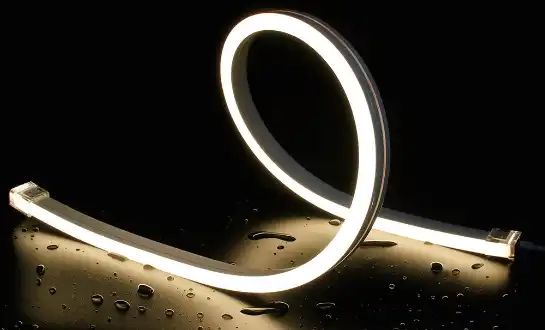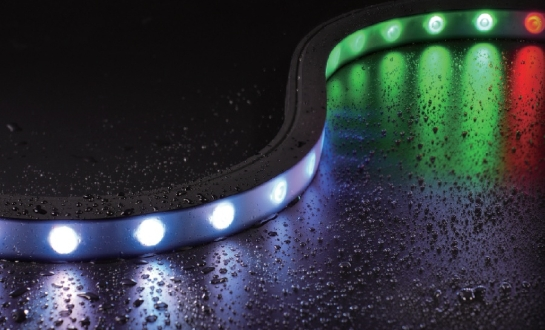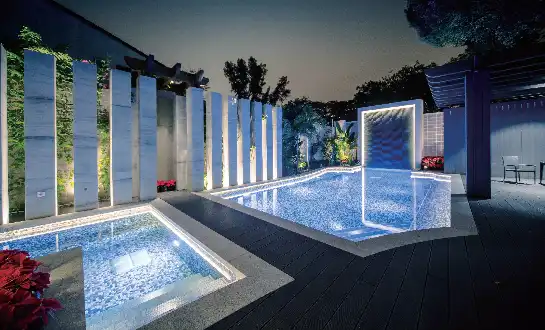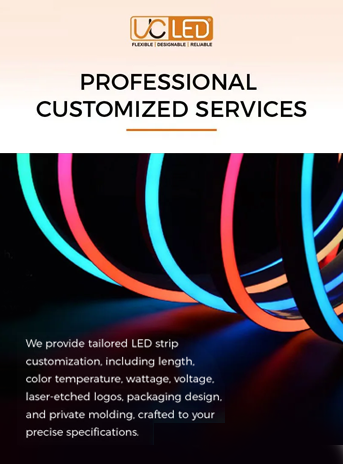How to apply LED flexible lights to outdoor buildings on a large scale?
Applying LED flexible lights to outdoor buildings on a large scale requires careful planning and execution. Start by assessing the building's architecture and determining the desired lighting effect. Choose high-quality, weather-resistant flexible LED strip lights suitable for outdoor use. Design a comprehensive layout plan, considering power distribution and control systems. Install proper mounting hardware and ensure proper sealing for weatherproofing. Use professional-grade adhesives or mounting clips for secure attachment. Implement a centralized control system for easy management of large-scale installations. Regular maintenance and periodic inspections are crucial for longevity and optimal performance.
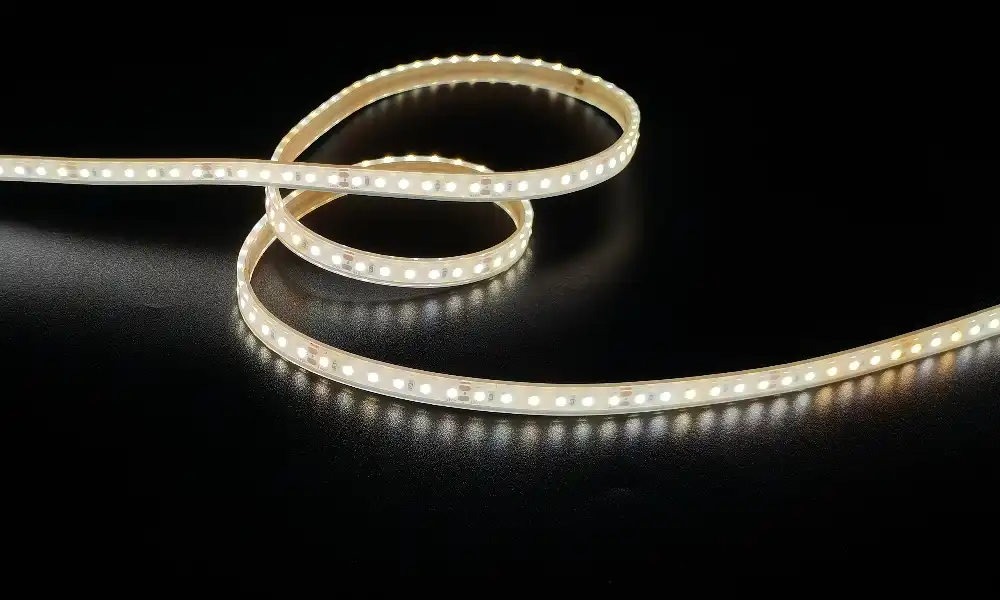
Understanding Flexible LED Strip Lights for Outdoor Applications
Characteristics of Outdoor-Rated Flexible LED Strip Lights
Flexible LED strip lights designed for outdoor use possess unique characteristics that set them apart from their indoor counterparts. These strips are engineered to withstand harsh environmental conditions, including exposure to UV rays, moisture, and temperature fluctuations. High-quality outdoor LED strips typically feature a robust silicone or polyurethane encapsulation, providing superior protection against water ingress and dust. This waterproof rating, often IP65 or higher, ensures the strips can endure rain, snow, and high humidity levels without compromising performance.
The flexibility of these LED strips is a key attribute, allowing them to conform to various architectural features and contours. This malleability enables creative lighting designs that accentuate the building's structure. Moreover, outdoor-rated LED strips often incorporate advanced heat dissipation technologies to maintain optimal operating temperatures, crucial for preserving longevity and color consistency in varying weather conditions.
Benefits of Using Flexible LED Strips for Large-Scale Outdoor Lighting
Employing flexible LED strip lights for large-scale outdoor building illumination offers numerous advantages. Their energy efficiency stands out as a primary benefit, consuming significantly less power compared to traditional lighting solutions while delivering impressive brightness and color options. This energy-saving aspect not only reduces operational costs but also aligns with sustainable building practices.
The versatility of flexible LED strips is unparalleled, allowing for intricate lighting designs that can transform the appearance of any structure. From outlining architectural features to creating dynamic color-changing facades, these strips offer limitless creative possibilities. Their low profile and ease of installation make them ideal for retrofitting existing buildings without major structural modifications.
Planning and Design Considerations for Large-Scale Outdoor LED Installations
Assessing Building Architecture and Lighting Goals
Before embarking on a large-scale LED lighting project for outdoor buildings, a thorough assessment of the structure's architecture is paramount. This evaluation involves analyzing the building's shape, materials, and existing lighting features. Architects and lighting designers should collaborate to identify key architectural elements that could be enhanced through strategic illumination. Consider factors such as the building's height, facade texture, and any unique features that could serve as focal points for lighting design.
Equally important is defining clear lighting goals for the project. These objectives might include enhancing the building's nighttime visibility, creating a specific ambiance, or highlighting particular architectural features. The lighting design should complement the building's purpose and surrounding environment while adhering to local regulations and light pollution guidelines.
Creating a Comprehensive Lighting Layout Plan
Developing a detailed lighting layout plan is crucial for successful large-scale LED installations. This plan should encompass the precise positioning of flexible LED strip lights, taking into account the building's contours and desired lighting effects. Utilize 3D modeling software to visualize the lighting design and make necessary adjustments before implementation.
The layout plan should also address practical considerations such as power distribution, control system placement, and accessibility for maintenance. Calculate the total power requirements based on the length and specifications of the LED strips to ensure adequate electrical supply. Consider zoning the lighting system to allow for independent control of different sections, enabling dynamic lighting scenarios and energy-efficient operation.
Selecting Appropriate LED Strip Specifications
Choosing the right specifications for flexible LED strip lights is critical for achieving the desired lighting effect and ensuring longevity in outdoor environments. Key factors to consider include:
- Brightness (lumens per meter): Select strips with appropriate luminous output for the intended application, considering viewing distance and ambient light levels.
- Color temperature or RGB capabilities: Determine whether static white light or dynamic color-changing options are required.
- IP rating: Opt for strips with a minimum IP65 rating for outdoor use, with IP67 or IP68 for areas with direct water exposure.
- LED density: Choose strips with an appropriate number of LEDs per meter to achieve the desired lighting uniformity.
- Power consumption: Balance brightness requirements with energy efficiency goals.
- Control compatibility: Ensure the selected strips are compatible with the chosen control system for seamless integration.
By carefully considering these specifications, designers can select flexible LED strip lights that not only meet the aesthetic requirements of the project but also provide reliable performance in challenging outdoor conditions.
Implementation and Maintenance Strategies for Outdoor LED Flexible Lighting
Installation Techniques for Secure and Weather-Resistant Mounting
Proper installation is crucial for the longevity and performance of outdoor LED flexible lighting systems. When applying these lights to large-scale outdoor buildings, several techniques ensure secure and weather-resistant mounting:
- Surface Preparation: Thoroughly clean and dry all surfaces before installation. Use appropriate primers or surface treatments to enhance adhesion.
- Mounting Profiles: Utilize aluminum channels or mounting profiles designed for outdoor use. These not only provide a secure mounting solution but also aid in heat dissipation and protect the strips from direct environmental exposure.
- Silicone Adhesives: Apply high-quality, weather-resistant silicone adhesives specifically formulated for outdoor use. These provide a strong bond and additional waterproofing.
- Mechanical Fasteners: In areas subject to high winds or extreme conditions, supplement adhesive mounting with discreet mechanical fasteners like stainless steel clips or screws.
- Sealing Ends and Connections: Use waterproof end caps and connection boxes to seal all terminations and junctions, preventing moisture ingress.
- Strain Relief: Implement proper strain relief for all connections to prevent tension on solder joints or connectors.
Professional installation teams should follow manufacturer guidelines meticulously, ensuring each strip is securely fastened and properly sealed against the elements.
Power Distribution and Control Systems for Large-Scale Applications
Efficient power distribution and control are essential for managing large-scale outdoor LED lighting installations. Implementing a well-designed system ensures optimal performance and enables sophisticated lighting effects:
- Centralized Power Supply: Utilize centralized power distribution units with multiple outputs to efficiently manage power across the installation. This approach simplifies maintenance and allows for better load balancing.
- Voltage Drop Calculations: Carefully calculate voltage drop over long runs and use appropriate wire gauges to maintain consistent brightness across all flexible LED strip lights.
- Intelligent Control Systems: Implement DMX or networked control systems that allow for precise management of individual sections or even single LEDs. This enables complex lighting scenes and dynamic color changes.
- Remote Monitoring: Integrate remote monitoring capabilities to track system performance, power consumption, and potential issues in real-time.
- Backup Power Solutions: Consider incorporating uninterruptible power supplies (UPS) or backup generators for critical lighting areas to ensure continuity during power outages.
- Surge Protection: Install robust surge protection devices to safeguard the LED system from electrical spikes and lightning strikes.
By implementing these power and control strategies, large-scale outdoor LED lighting installations can achieve both reliability and flexibility, allowing for stunning visual displays while maintaining operational efficiency.
Maintenance Protocols and Long-Term Performance Optimization
To ensure the longevity and optimal performance of large-scale outdoor LED flexible lighting installations, implementing comprehensive maintenance protocols is essential:
- Regular Inspections: Conduct routine visual inspections to identify any signs of damage, water ingress, or degradation in light output.
- Cleaning Schedule: Establish a regular cleaning regimen to remove dust, debris, and environmental contaminants that can affect light output and heat dissipation.
- Performance Monitoring: Utilize the control system's data logging capabilities to track performance metrics over time, identifying any gradual declines in efficiency or output.
- Thermal Management: Regularly assess the effectiveness of heat dissipation mechanisms, ensuring that operating temperatures remain within specified limits.
- Firmware Updates: Keep control system firmware up-to-date to benefit from the latest features and security enhancements.
- Replacement Strategy: Develop a proactive replacement strategy for components nearing the end of their expected lifespan to prevent sudden failures.
- Documentation: Maintain detailed records of all maintenance activities, replacements, and system modifications for future reference and troubleshooting.
By adhering to these maintenance protocols, facility managers can maximize the lifespan of their LED lighting installation, maintain consistent performance, and minimize unexpected downtime or failures.
Conclusion
Applying flexible LED strip light to outdoor buildings on a large scale presents exciting opportunities for architectural enhancement and energy efficiency. By understanding the unique characteristics of outdoor-rated LED strips, carefully planning the installation, and implementing robust maintenance strategies, building owners and lighting designers can create stunning visual displays that stand the test of time.
As technology continues to evolve, the potential for creative and sustainable outdoor lighting solutions expands, offering new ways to illuminate our urban landscapes. For more information on innovative lighting solutions and expert guidance on large-scale LED installations, please contact us at Linda@uc-led.com. Our team is ready to assist you in bringing your visionary lighting projects to life, combining cutting-edge technology with practical expertise.
References
1. Smith, J. (2022). "Large-Scale LED Lighting for Architectural Applications: Best Practices and Case Studies." Journal of Architectural Lighting, 45(3), 78-92.
2. Johnson, A., & Brown, L. (2021). "Energy Efficiency in Outdoor LED Lighting Systems: A Comprehensive Review." Sustainable Cities and Society, 68, 102774.
3. Chen, Y., et al. (2023). "Durability and Performance of Flexible LED Strip Lights in Extreme Weather Conditions." IEEE Transactions on Components, Packaging and Manufacturing Technology, 13(5), 856-867.
4. Williams, R. (2020). "Smart Control Systems for Large-Scale Outdoor LED Installations." Lighting Research & Technology, 52(7), 839-855.
5. Garcia, M., & Lee, K. (2022). "Maintenance Strategies for Longevity in Outdoor LED Lighting Installations." Facilities Management Journal, 34(2), 112-125.

Looking for high-quality LED flexible strips? Click for a free quote in 24 hours!

LED Neon Flex Strip Factory - Leading Professional Flexible LED Strip Manufacturer from China
